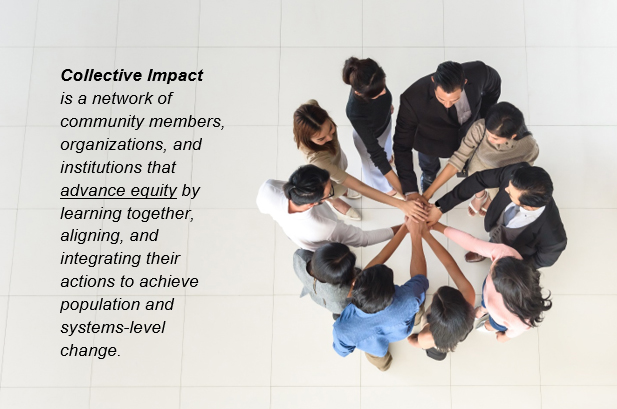Are SMEs able to Maximise Their Collective Impact?

Although 90% of businesses in developing countries are small and medium-sized enterprises (SMEs), these countries are yet to exploit their potential in terms of growth and contribution to the economy. In recent times, SME founders have accessed various support to integrate proven practices and technologies to grow vis-a-vis Government commitment to reducing income inequalities and creating an enabling environment to bridge productivity gaps between SMEs and large companies.
This progress notwithstanding, I admonish SME founders not to be overly reliant on others or the system. As entrepreneurs, they must show resourcefulness by taking responsibility for their profitability and growth. In this vein, I do not doubt that African SMEs can accelerate their growth through proven business growth strategies.
This article could be considered a proposal for SMEs to test the Collective Impact concept as a Shared Value strategy in doing business.
What is Collective Impact?
Highlighting Mark Kramer and John Kania‘s 2011 published article in Stanford Social Innovation Review entitled Collective Impact, the concept was defined as the commitment of a group of important actors from different sectors to a common agenda for solving a specific social problem. Fundamentally, collective impact is a type of collaboration. However, according to Mark and John, five essential conditions make the concept unique.
As the concept evolved, in 2016, together with the Collective Impact Forum, they published eight additional principles of practice for implementing Collective Impact. While featuring the importance of engaging community members, equity was a priority. Therefore, in January 2022, John, Mark, and four other network members discovered through reflections and observation of their personal and professional journeys, including the experiences of others, that centering equity in collective impact could be the game-changer for any venture.
As a result, they proposed a revised definition of Collective Impact as a network of community members, organizations, and institutions that advance equity by learning together, aligning, and integrating their actions to achieve population and systems-level change.
The idea of centering “equity” in collective impact makes it a potent growth strategy for African SMEs who will apply the concept.
Maximizing Collective Impact through the Creative Capital Model
Now you know what collective impact means, wondering what the Creative Capital Model is all about? With equity in mind, the example below is a practical explanation of the Creative Capital model, which I define as a mutually beneficial investment decision of two businesses/individuals to achieve collective impact.
Example: AAA LTD, a fashion SME in Ghana, employed SIBIYA INC, a branding agency in South Africa, to leverage their unique branding expertise to improve consumer perception and experiences with their fashion products. As part of the deal, AAA LTD will give SIBIYA INC X% of equity in the SME.
The significance: AAA LTD has aligned incentives, hedged its risks, and reduced its time to brand and market its fashion products. Both SMEs can now benefit from the future success of the products and SMEs.
There is Power in the Collective.
It is worth noting that the Collective Impact concept and Creative Capital model reaffirm our shared recognition as African entrepreneurs that no single organization, however innovative or powerful, could realize sustained growth in a business landscape saddled with diverse challenges.
Collective Impact and the Creative Capital Model may seem very simple, but they are not so simple in terms of implementation. Though implementation may be difficult, with intentionality and grit, they will unequivocally generate unprecedented economic and social value.
 By: Andrews Akoto-Addo. A Program Consultant at Reach for Change, Ghana, a Member of the SVAI Africa Council of 8, and an Ambassador of UNLEASH.
By: Andrews Akoto-Addo. A Program Consultant at Reach for Change, Ghana, a Member of the SVAI Africa Council of 8, and an Ambassador of UNLEASH.




